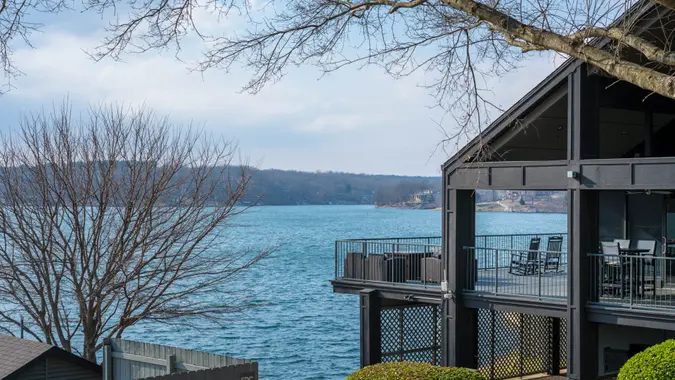The Expense Retirees Always Underestimate (It’s Costing Them Thousands)

Commitment to Our Readers
GOBankingRates' editorial team is committed to bringing you unbiased reviews and information. We use data-driven methodologies to evaluate financial products and services - our reviews and ratings are not influenced by advertisers. You can read more about our editorial guidelines and our products and services review methodology.

20 Years
Helping You Live Richer

Reviewed
by Experts

Trusted by
Millions of Readers
Most people head into retirement with a rough idea of how much money they need to keep a roof over their heads and food on the table. They calculate their costs based on the life they’ve led or want for their golden years.
But there’s one expense that many retirees tend to underestimate or not even plan for at all: healthcare, especially long-term care.
Medicare Doesn’t Cover Everything
A big reason for the surprise is that many people assume Medicare covers everything. It doesn’t. Medicare pays for hospital stays, doctor visits, qualifying short-term stays in a nursing home and some prescription drugs, but it won’t cover most long-term care. If you live alone and get to the point where you need someone to care for you every day, you’ll need to pay out of pocket for that.
Long-term care is expensive. Nationally, it costs almost $78,000 a year for a home health aide and $127,750 for a private room in a nursing home for the typical person, according to 2024 data from Genworth, an insurer.
Long-term care isn’t just limited to nursing homes. It includes assisted living communities, adult day care and in-home services that help with everyday things like bathing and meal prep. Each option comes with a different price tag and level of support and costs also vary widely depending on where you live.
Longer Lives Mean Bigger Bills
Americans are living longer than ever. In 2023, life expectancy at birth was 78.4 years for the total U.S. population, an increase of 0.9 years from 77.5 in 2022, according to the National Center for Health Statistics.
But living more years also means more chances for chronic conditions, mobility issues or memory problems that require expensive care. The U.S. Department of Health & Human Services’s Administration for Community Living data shows that about 70% of people turning 65 will need some type of long-term care at some point.
Fidelity estimates a 65-year-old person retiring in 2024 will spend around $165,000 on basic healthcare costs over the course of retirement. That figure doesn’t include long-term care. Despite those realities, Fidelity’s surveys show many people think they’ll only spend around $75,000 total on healthcare in retirement, less than half of Fidelity’s calculations.
Don’t Wait To Plan
The later you start planning for these costs, the more expensive it gets. Long-term care insurance and supplemental Medigap policies are far cheaper when you buy them in your 50s or early 60s. If you wait until health problems show up to buy them, you might not qualify at all or have to pay really high premiums.
So, if you haven’t already, build healthcare and long-term care costs into your retirement budget and update those numbers every few years. Fidelity, AARP and other organizations offer online tools and calculators that can help you estimate what you’ll actually need based on your age and location.
And make sure to stay active, eat well and keep up with preventive care so that you can reduce the risk of expensive chronic conditions during your retirement years.
More From GOBankingRates
 Written by
Written by  Edited by
Edited by 























